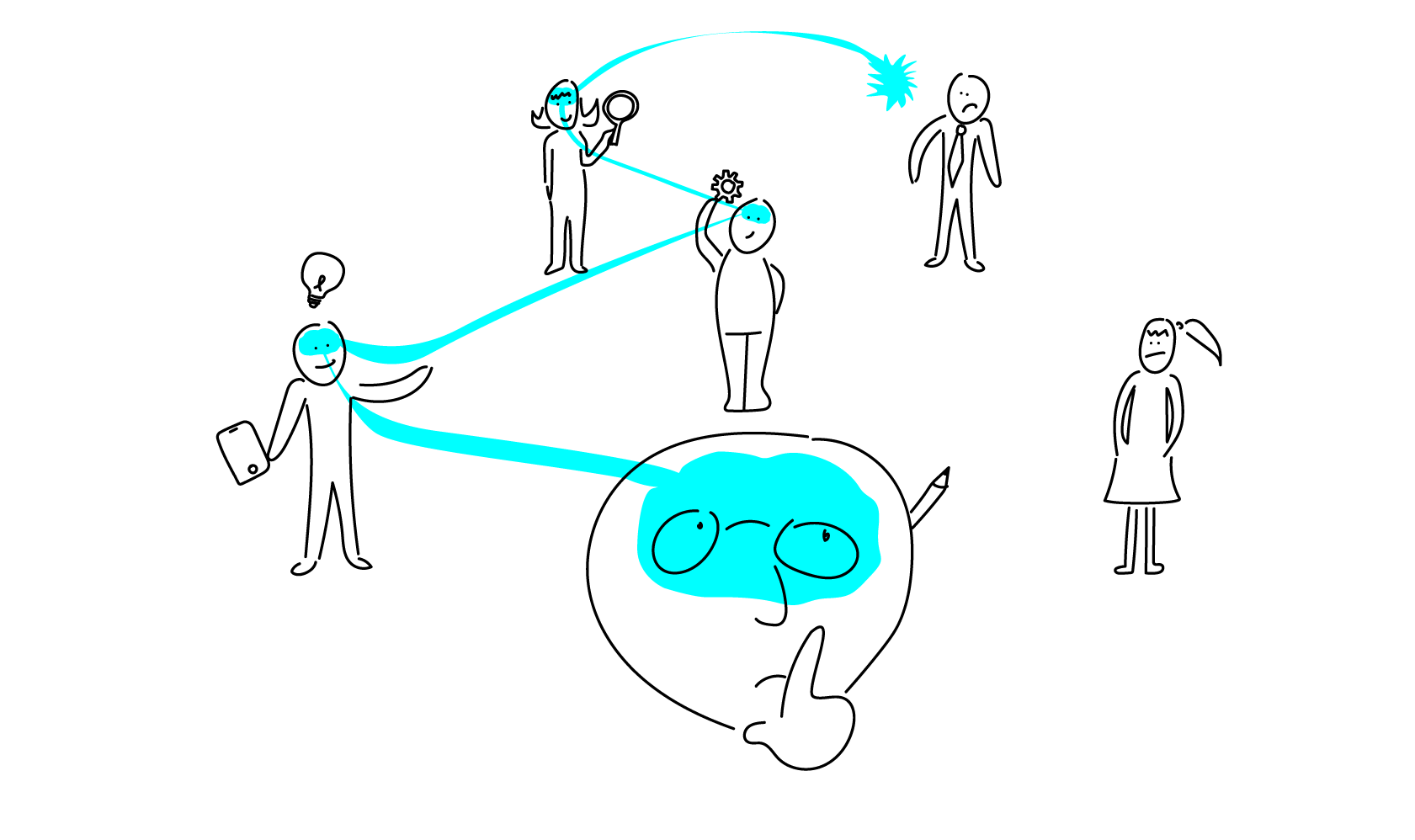
Design in business is awesome and often misunderstood
There are countless benefits of investing in design for digital products, from solving the right problems to increasing customer spending. Companies like Apple have proven design’s importance to success and market value, but that’s not enough for many companies.
Unlike sales or marketing, seeing direct numbers tied to investing in design can be difficult. A lot of companies have never had an established design practice, so they don’t know what they’re missing. There are misconceptions of what design is because organizations that are low on the design maturity scale think design means making things pretty.
Design, in respect to digital products, is the process of defining a product and creating its user experience (UX) while working closely with the business and development teams to facilitate the vision. Typically, product design utilizes Design Thinking, which is a process to systematically define and solve problems.
Your company could benefit from a richer design culture if leaders in your product team say things like:
- “We know our users, we use our product all the time”
- “Why would we spend money redoing something that already works?”
- “Let’s just start coding and learn as we go”
Tips to spread design culture in your organization
Educate
If design is misunderstood in the organization, try to inform the stakeholders. When people understand what it is and how to evaluate it, they will support it. A great way to educate others is to include them in the process. This can be done by inviting them to participate in workshops or by sharing design summaries of project processes and results.
Build trust and start with an easier, smaller project
If this is a new concept in the organization, it can help to ease others into it with a simpler project. An ideal introductory project is not a large investment, so it is easier to approve. It should also produce obvious results of value. A successful first project is the foot in the door you need to get the design ball rolling.
Know who you’re talking to
Empathize with your colleague and think of what will make them look successful to their boss. What is the context or history at your company? Speak their language and use their jargon. You will be seen as an asset instead of an inconvenience by understanding their goals.
Do some math
Many decision makers and potential advocates are driven by numbers, so it can really help the case if you can provide numbers around the impact of design when possible. For example, improving a poorly designed internal product would save X dollars if it eliminates Y errors that take Z hours to resolve. Or if there is a drop-off of e-commerce conversions due to unnecessary steps, the redesign could produce X dollars in recovered revenue.
Commiserate with coworkers
By talking to your coworkers you can discover their pain points with your products. Look for problems like your salespeople have a hard time selling a poor feature, or a manager spends too much time manually fixing errors from the product. Knowing their pain gives you a much stronger case for fixing it.
Find credible resources to back up your argument
Data and best practices provided by credible sources give your argument an edge, so it’s not just your opinion (or because it’s in your best interest). Nielsen Norman Group and other reputable sources like Google’s research library are great resources. Find case studies or articles that align with your project to support your case.
Don’t give up
Keep looking for opportunities to make the case for design. A transformation won’t happen overnight, but every step will guide the team in the right direction. Building a design culture relies on creating advocates who see how they have been positively affected by design.
